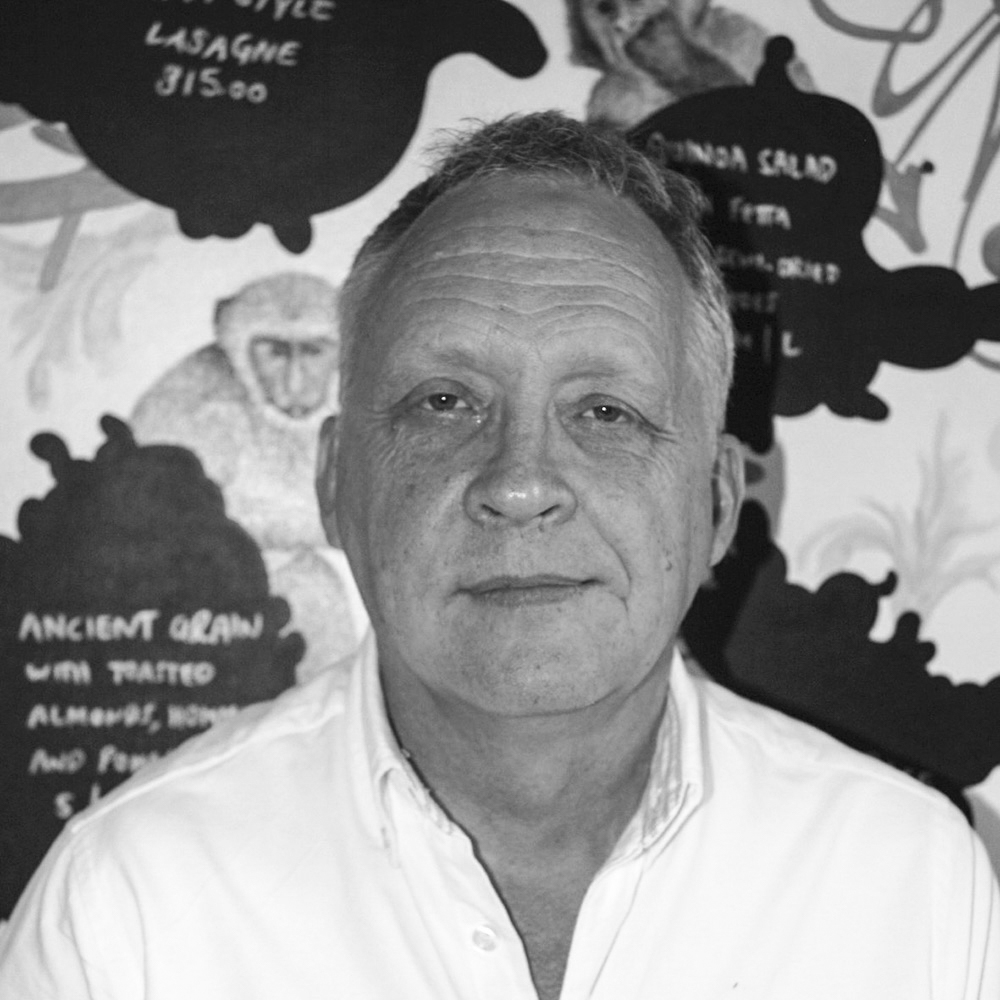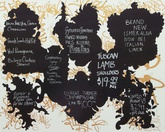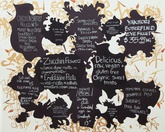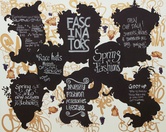Stieg Persson
Melbourne
2017
Displayed 2017 at Museum of Contemporary Art Australia

Stieg Persson
Born 1959, Melbourne. Lives and works Melbourne
With a commitment to the examination of both form and content, Stieg Persson’s work has for a number of years been concerned with what painting can do. He calls on strategies such as limiting the palette, a formalist concern for composition and the flow of mark from arabesque to calligraphy to text to probe the functionality of painting as well as provide the foundation for social discourse. Although traversing many modes over 30 years, his paintings can be thought to operate as documents that are grounded in time and place.
Artist text
by Victoria Lynn
It has been a long time since class was addressed in Australian art. While the subject of labour, and in particular artistic labour, is one that persists into the present, we probably have to go back to Danila Vassilieff’s The Workers (c.1942) to see an image that actually depicts a particular class of Australian society. Class itself has undergone a huge transformation. A recent extensive study in the UK resulted in the identification of seven classes, including a massive expansion of the middle class, with the ruling elite at the top and the precariat at the bottom. (1) For several years Stieg Persson has made work about the increasing depoliticisation of the Australian middle class and its obsession with consumer culture. Motivated by abiding moral questions, Persson uses his interest in the juxtaposition of various ‘styles’ of painting to tackle the middle-class preoccupation with ‘lifestyle’.
Since the 1980s, Persson’s work has drawn on idioms such as the arabesque, floral patterns, heraldic design, Biedermeier furniture, bleached bones, blood cells and graffiti. On one level, the work is a dialogue between modernism and décor, between the rigorous pursuit of abstract formalism and the ideas of excess and the abject. Underscoring this dialogue, however, is a deeper conviction about human values, which on this occasion is filtered through the flourishes of Rococo.
Typified by ornate, asymmetrical designs, the 18th-century French Rococo style permeated the arts. Associated with frivolity and excessive use of gold, it transformed into a rococo revival throughout Europe in the 19th century, and has since become synonymous with wealth and bad taste. Persson’s new paintings present blackboard signs inside rococo-shaped forms. Composed of retail signage observed by the artist in the affluent Melbourne suburb of Brighton, the curlicue of the shapes echoes the middle-class indulgence of the messages, which boast such delights as: ‘Giotto Premium V3 $2,799 + gift pack’, ‘Tuscan Lamb Shoulders $19.99 KG’ and ‘All Day Watermelon Martinis $7’, along with promises of ‘Today is a good day to have a great day!’ The artist comments, ‘it is as if I have unleashed Robert MacPherson in Brighton’, in reference to the blackboard signs of one of Australia’s pre-eminent conceptual painters. In these accumulated compositions the texts are hilarious, but, as the artist laments, ‘gustatory aesthetics has replaced art aesthetics’. (2)
The gold in these paintings is reserved for the graffiti-like script in the background. Graffiti, argues Persson, is consumed like art, food, fashion and wellbeing products. Painterly style, the histories of style and ‘lifestyle’ have, sadly, converged. By prising open the confluence of such idioms through his wondrous play of positive and negative forms, Persson touches on the raw nerve of middle-class consumer culture. Rather than ‘Stay focused and extra SPARKLY!’, his is a call for action.
Notes
(1) Mike Savage, Fiona Devine, Niall Cunningham, Mark Taylor, Yaojun Li, Johs Hjellbrekke, Brigitte Le Roux, Sam Friedman, Andrew Miles, ‘A new model of social class? Findings from the BBC’s Great British Class Survey experiment’, Sociology, vol.47, no.2, April 2013, p.245.
(2) Stieg Persson, interview with author, 12 September 2016.


